NORTH WALES COAST RAILWAY:NOTICE BOARD
Rheilffordd arfordir gogledd Cymru: Hysbysfwrdd
17 January 2022




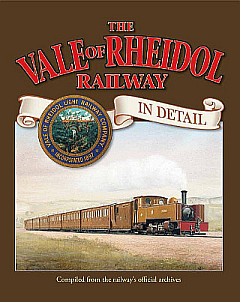
Contributions to the Notice Board are welcome, although they may not always be used, due to time constraints, especially if they don't follow the file name convention given on the Contributions Page.
Forthcoming events
Charter trains may be subject to cancellation or postponement.
Monday 17 January RCTS online Zoom Professor Stuart Cole “Rail Policy in Wales”
Thursday 27 January Shropshire Railway Society A Celtic journey, North Wales coast to Ireland - Rob Smout
February 2022

Thursday 10 February Shropshire Railway Society Stevens' wanderings with a camera 1954 - 2004 Berwyn Stevens
Monday 21 February RCTS Chester Martyn Hilbert “Network North West”
Thursday 24 February Shropshire Railway Society My early years photographs - Ken Hayward
March 2022
Wednesday 2 March RCTS Liverpool Paul Shackcloth “L & Y Engines At Work, Part 1”
Monday 21 March RCTS online Zoom Geoff Plumb “The Wrexham & Shropshire Railway”
April 2022
Monday 25 April RCTS Chester David Powell “Merseyrail Fleet Replacement”
North Wales Coast Railway website created and compiled by Charlie Hulme
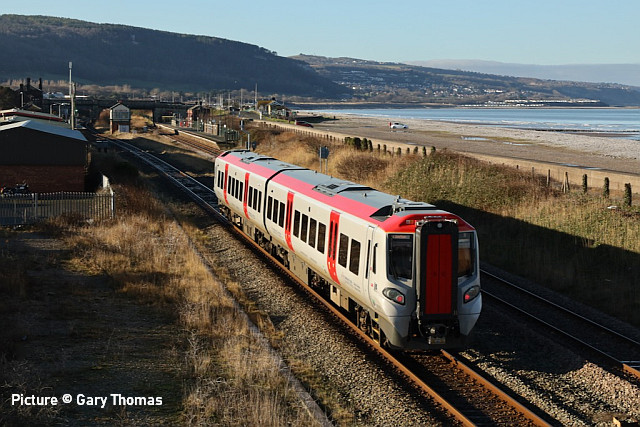
197 001 seems to be doing most of the training runs for the new units. Gary Thomas photographed it near Abergele station on sunny 13 January.
A short epistle this week due to various other activities. Items for next week welcome. - Charlie
News pictures
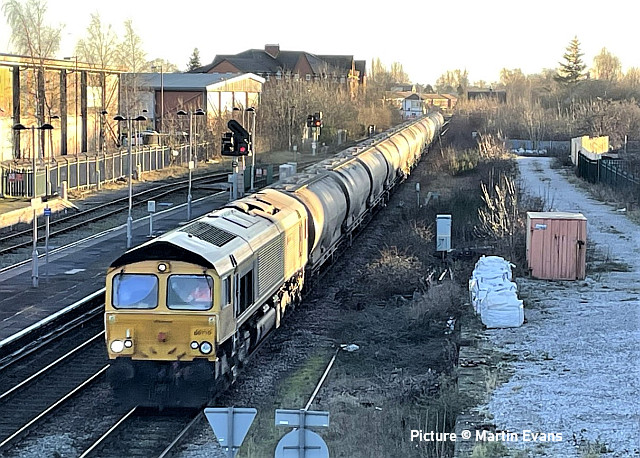
66 710 eases into Wrexham General in bright sunlight with the Hanson sidings at Avonmouth to Penyffordd cement tanks on 12 January ...
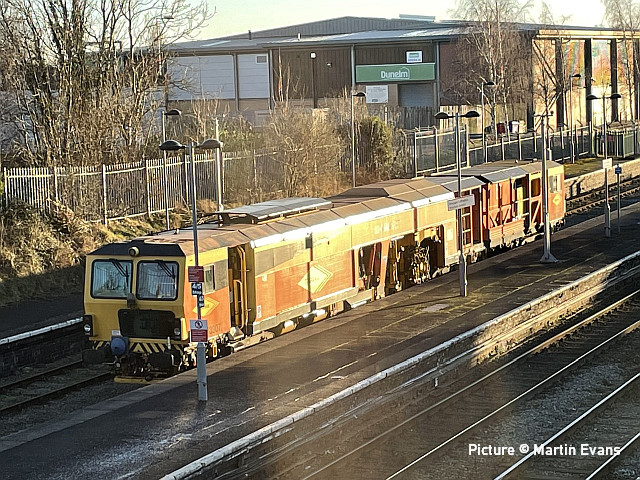
... and on thee same day, Tamper 73907 stabled in Wrexham bay after arriving from Westerleigh ISU at 13:37. Pictures by Martin Evans.
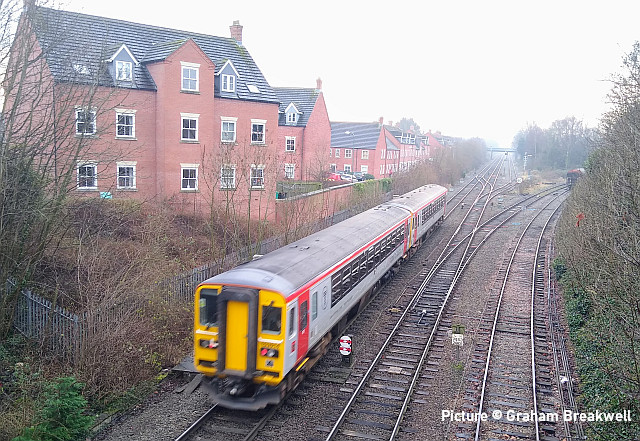
153 320 and 153 914 on 15 January's 10:31 Manchester Piccadilly to Milford Haven passing Severn Bridge Junction, Shresbury - quite a test of endurance for any long distance passengers.
Glan Conwy sidings - report by Chris Parker
Paul Marshall, a Llandudno-based fellow BLS member, viewed the sidings to the former goods dept at Llandudno Junction from overbridges and a public path on 7 January. All vegetation on the south side together with several sidings has been removed and a new track laid and ballasted. This divides into two just before the concrete pad of the former oil terminal; a year ago, three sidings were still set in it.
The track work must have been done by road/rail equipment as the main line connection west of the station is not complete (the crossing is plain lined), so clearly commencement of slate waste traffic is still not imminent. With Paul's permission I've attached a couple of his photos.
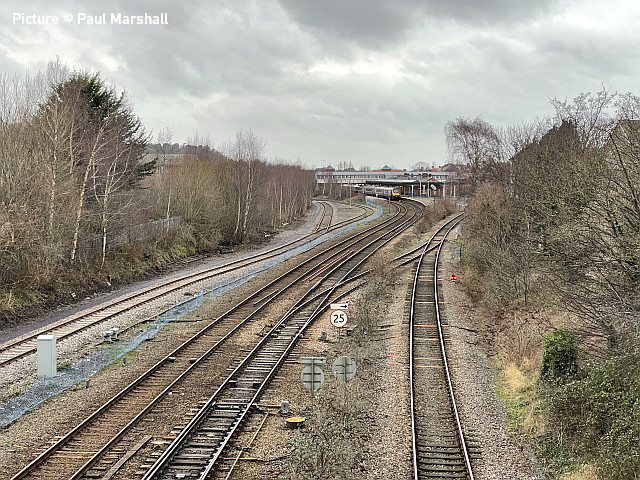
Above: taken from Queen Street bridge, looking west back towards Llandudno Junction station. The tracks, from the left, are: the new connection to the old oil depot; the Down Main; the Up and Down Main; and the Up Passenger Loop (Up and Down Passenger Loop beyond the crossover). Avanti Super Voyager 221 106 is at Platform 3, having arrived 2 minutes early on 1D83, the 10:49 Crewe - Holyhead.
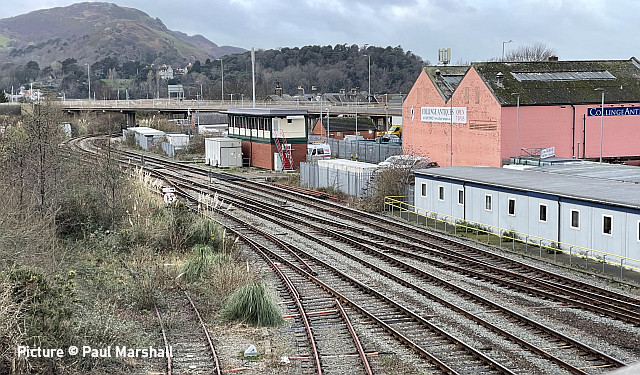
Taken from 6G Road bridge, immediately west of Llandudno Junction station, looking west, towards Conwy. The tracks are, from the left: the overgrown Quay Siding; the disconnected line from the old Sidings 1-7; the Down Main; the Up and Down Main; and the Up and Down Passenger Loop. The main
lines curve left, behind the vegetation, to Conwy and the Llandudno Branch lines curve right beyond the signal box.
Looking back: Diesels 2000 part 2 - by David Pool
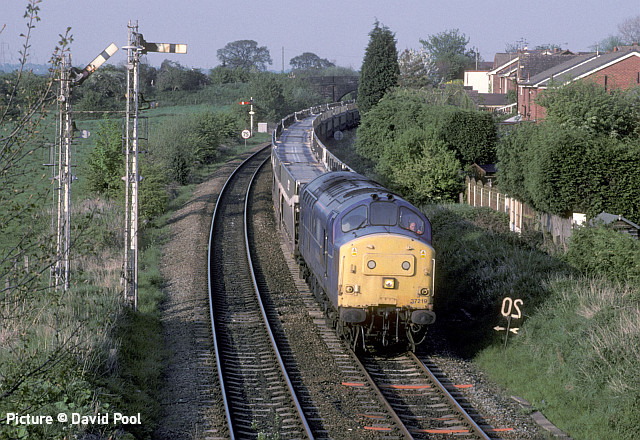
On 4 May 2000 a Mainline Blue 37 219 was taking the Ellesmere Port branch at Helsby with 6F11, the empty car carriers from Garston to Ellesmere Port, where they would be loaded with Opel cars from the Vauxhall plant. An image of the returning loaded train at Frodsham appeared in the Notice Board on 8 June 2020.
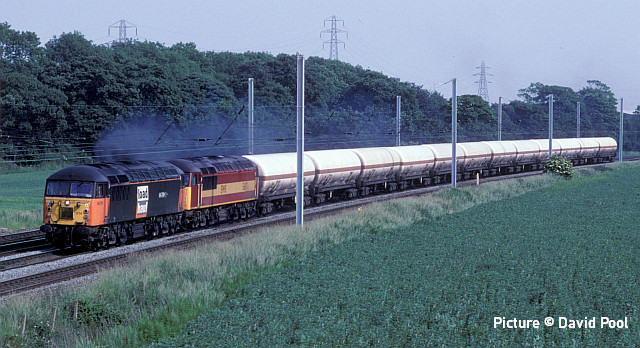
The 15:20 Stanlow to Humber tanks (6E05) were double headed on 19 June 2000, with a LoadHaul 56 074 and an EWS liveried 56 117. The train is on the Fast line at Winwick, so I assume it would have gone via Farington Junction and Hebden Bridge, rather than via Manchester and Diggle.
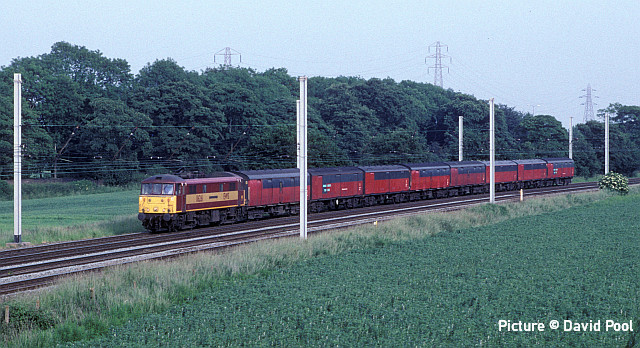
The Warrington Mail Terminal had opened by 2000, and on the same day as the Stanlow tanks 86 261, also in EWS livery, was heading north just after 7pm with a mixed rake of General Utility Vans in Rail Express Systems and Royal Mail liveries. I assume the destination would be Glasgow, but I have no confirmation of this.
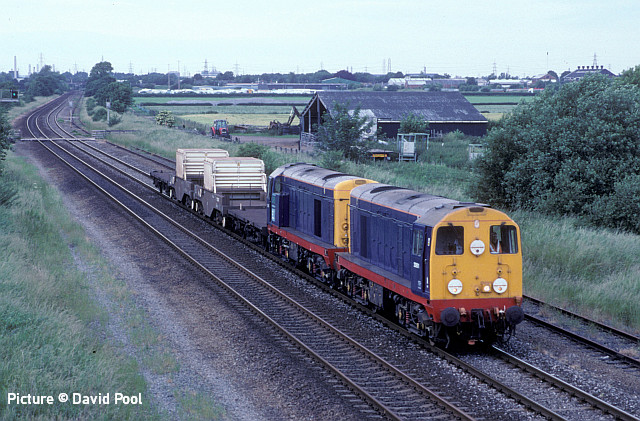
Wylfa nuclear flask trains were regularly worked by a pair of Class 20/3 locomotives, so when on 20 June 2000 the 1509 from Valley to Sellafield was worked by a pair of 20/9s, it was a notable occasion. These locomotives had become famous when in September 1999 20 901, 20 902 and 20 903 travelled to Kosovo with the “Train for Life”, spending six months working trains in Kosovo and Macedonia. 20 901 and 20903 are passing Beeches Farm.
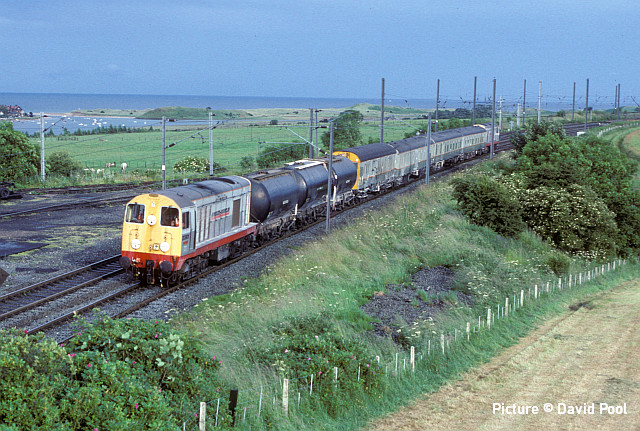
Before being acquired by DRS, the 20/9s were used by Hunslet-Barclay on weed killing trains from 1989. At that time there were two operators of these trains, Nomix/Chipman and Schering (previously Fisons). Prior to 1989 the trains had been formed with tank wagons and a variety of coaches, but Mk1 coaches were generally used after the 20/9s arrived. These trains were always difficult to photograph, since very little information on their workings was published in the railway press, and while on holiday in Northumberland I was lucky to see the Nomix/Chipman train at Alnmouth on 8 July 1993, top and tailed by 20 901 Nancy and 20 904 Janis, and comprising black water tanks and four grey and white coaches.
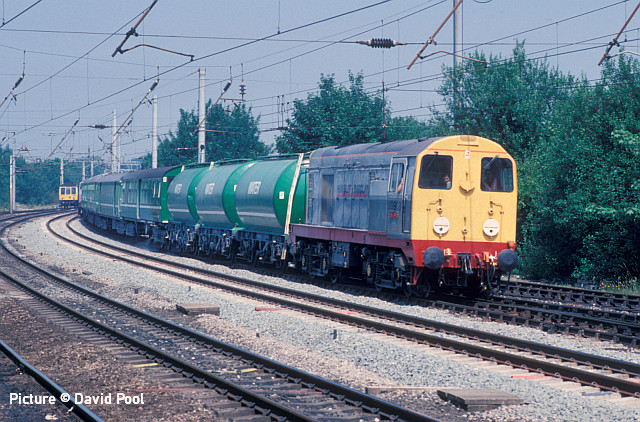
The Schering train was used in the North West and Midlands, and on 19 July 1989 it was travelling South through Lancaster with 20 903 Alison and 20 902 Lorna. I think it had come from Hellifield, and had possibly worked on the S & C. The first coach looks interesting, and it appears to be the Spraying Coach, which had been converted from a Gloucester Class 100 unit, but I would appreciate any confirmation of the coaches seen in use on this train in 1989. .
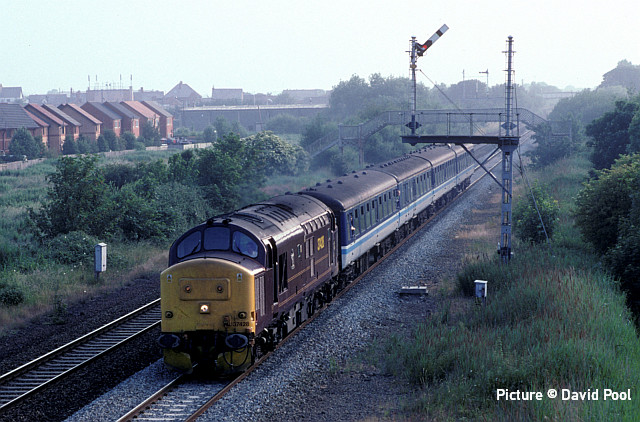
Many Class 37/4 locomotives have worked on the North Wales Coast, but 37 428 was one I had not often seen. It had spent many years in Scotland and also working to Cardiff via the Heart of Wales line. It had been painted in a special maroon livery in 1998 to work the Royal Scotsman charter train, and on 30 June 2000 I was surprised to see it on the 15:27 Crewe to Holyhead working. I decided to get a better photo than my first attempt at Mold Junction, and taking advantage of the light evenings I headed for Prestatyn, and got a nice shot as it returned on the 1822 from Holyhead to Birmingham.
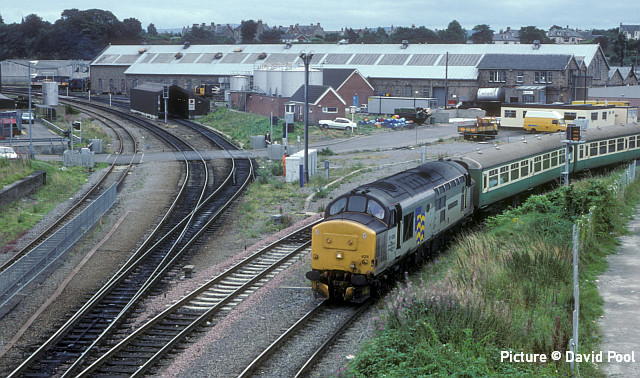
Looking at my photo records, I could find no shots of the original D6981 or of the 37 281 it had become. After the fitting of ETS equipment it was renumbered 37 428, and I had photographed it when it was working “The Hebridean” between Inverness and Kyle of Lochalsh on 25 August 1991. At that time it was in the Railfreight Petroleum livery, carrying the name David Lloyd George. It has just left Inverness station, the Motive Power Depot being within the triangle of lines. It returned to work in Scotland in 2001 and stayed until 2003, when it was stored, but eventually in 2013 it was withdrawn and cut up.
From Dave Sallery's archive
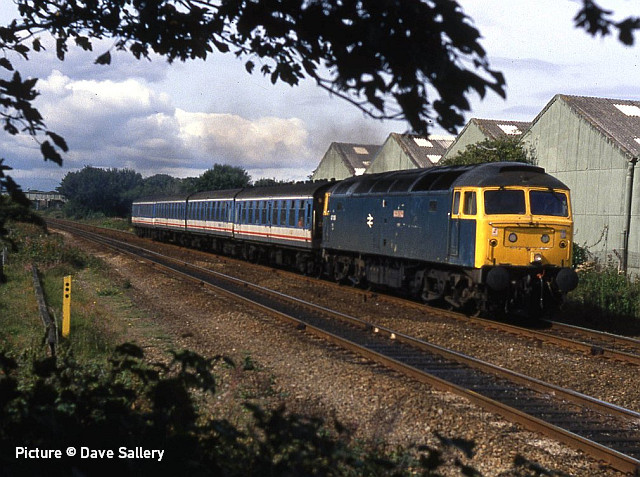
This view of 47 108 leaving Prestatyn on a Manchester service, on Saturday 1 September 1990 takes us back to that interesting summer when Regional Railways were short of the elderly diesel multiple units used on Manchester local services. Some redundant loco-hauled carriages were procured from Network South East, and put into traffic on the 'Oldham Loop' service using Regional Railways' Class 31/4s, and sometimes 'borrowed' Class 47s. The 'loop' services would contine through Manchester Victoria to towns and cities to the west, and were occasionally used on other services such as to North Wales.
47 108 was carrying the unofficial name Golden Eagle at the time: a sign that it had been at one time based at Tinsley depot, famous for their 'unofficial names. However by 1990 it has been transferred to Bescot and then Crewe. Normally used for freight, it had no way to heat the coaches, but in the summer that didn't matter.
Its duty on this day was: 2D56 07:10 Wigan North Western-Bangor, 09:50 Bangor - Manchester Victoria, 2D76 12: 44 Manchester Victoria - Llandudno
and 2F77 15:50 Llandudno - Liverpool Lime Street. Later that year it was moved to the Western Region where it was used on infrastructure work, eventually being scrapped in 1997.
(Thanks to class47.co.uk and sulzerpower.com for the information)

47 329 passing through Manchester Victoria with empty newspaper vans for Red Bank sidings, 7 June 1986. Newspaper trains ran overnight from Manchester to a wide variety of destinations, returning the next day. Some of the trains carried staff who parcelled up the papers for the individual newsagents during the journey. By 1988 the whole operation has ceased; most papers were no longer printed in the city centre.
Since then, all the structures to the right of the picture have disappeared, replaced by a much smaller facility and the large arena which later saw a tragic terrorism incident. As for 47 329, some years later it was rebuilt with a new engine and generator and re-numbered 57 011, which still exists in the DRS fleet, although likely to be sold off soon.
Vale of Rheidol - in detail
There seems to be a trend lately for the publication of large books covering every possible aspect of a chosen line, and published outside the normal book trade. Now available, ony from the Vale of Rheidol Railway's shop, is a new example, The Vale of Rheidol Railway in Detail, which runs to 462 pages, weighs 2.3kg and costs £70. Below is the author's descroption of the work:
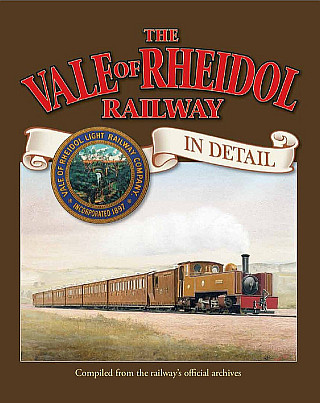
"Many years have been spent researching the railway’s own archives and archaeology dating back to the opening of the line in 1902 to produce this sumptuous volume. With the research coupled with detailed measured drawings, the book presents an unrivalled description of the Railway’s history, equipment and infrastructure.
"The production team could not have been better placed to undertake this work. They comprise of Stephen Phillips who undertook Design, Illustration and research. Llyr ap Iolo, Robert Gambrill and Robert Bance (VoR Archivist).
"The highly detailed drawings include locomotives, passenger carriages, goods stock, service vehicles, bridges, signalling, trackwork, station buildings, lineside equipment, water columns etc. Also featured are a fascinating selection of photographs, documents and ephemera from the railway’s own archives from opening to the present day. Many of these illustrations are being reproduced for the first time with many in colour. Carefully prepared livery diagrams illustrate the myriad of paint schemes used by the railway, including Brighton Ochre and BR Rail Blue.
"In addition to providing a comprehensive record of locomotives, carriages, wagons and buildings, some now long disappeared, aided by primary source information and close examination of surviving equipment, the work brings the record up to date with extensive details of modern developments and equipment. This includes a unique behind-the scenes insight into the engineering and operation of a modern preserved narrow gauge steam railway."
North Wales Coast home page | Archive | Previous Notice Board